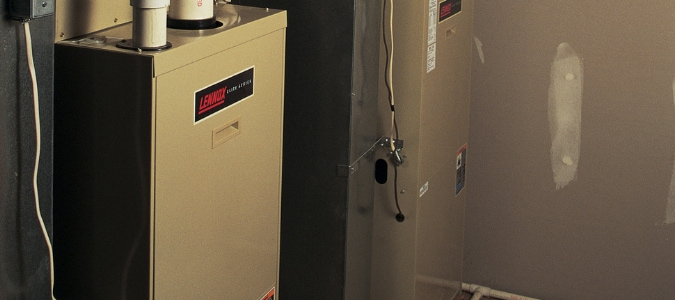
It’s important for homeowners to understand their options when it comes to heating or cooling systems. In this blog post, we’ll discuss heating options, specifically furnaces. A furnace is a mechanical device designed, constructed and used to generate heat. Of course, we most commonly know this appliance as a heater. Depending on what kind is being used, a furnace serves to either heat the interior of a structure to prevent unwanted cold from escaping or to burn materials for the purpose of molding or cremating. Different kinds of furnaces include household furnaces, metallurgical furnaces, industrial furnaces and incinerators.
Household Furnaces
Household furnaces, used to disperse cold from within a structure and provide hot water, have several different means of production and require any one of a variation of fuel sources: natural gas, fuel oil, coal or wood.
The two most common types of household furnaces are combustion and condensation. The first kind requires an exhaust and relies on burning fuel to generate heat. The second recycles heat by extracting it from the exhaust gases. This kind, being acidic, is designed to prevent corrosion. A condensation furnace has a pump to remove any water buildup that will occur within the system.
Heat distribution also varies, depending on the type of household furnace your home has. If the means of heat distribution requires water or steam, the mechanical device generating the heat is commonly referred to as a boiler. Many modern furnaces in the United States, however, use forced-air heat. Convection, or air distribution, directs cold air into a heating chamber and then blows it out through a system of ductwork into the structure.
Industrial Furnaces
Industrial furnaces, usually immense, are also called direct fired heaters. These furnaces have two different purposes: providing heat for a production process or serving as a reactor. These furnaces are uniquely designed, depending on each furnace’s intended function, heating manner, type of fuel and method of air combustion, but they all have common features, namely mechanisms that, when working together, produce heat. Typically, fuel is fed into a burner. This fuel is then converted into heat via blasts of air blown in by an air blower. Combustion takes place in a firebox, radiating heating fluid through a series of tubes, where it achieves its desired temperature. Flue gas, generated through combustion, leaves the firebox. The convection section recovers more heat from the exhaust before discharging through the smokestack.
Incinerating Furnaces
Incinerating furnaces, or incinerators, typically are used to burn, or cremate, waste. This kind of furnace can be categorized as an industrial furnace due to its size, productive function and the fact that industrial plants use incinerators to minimize their waste. Where incinerators are different than other industrial furnaces, however, is that they don’t assist in actual production; they only destroy waste. Their manner of fuel and performance, though, are the same as other industrial furnaces.
Put ABC’s Knowledge Of Heating Systems To Work For You
Furnaces are important appliances, but they must be respected at all times. People who don’t understand their capabilities, or don’t know how to properly use them, are at the risk of getting burned or facing other serious dangers The experienced team at ABC Home & Commercial Service are your local experts in furnace and heating options, HVAC trends and ways to save on heating costs. With ABC’s help, you can rest easy, knowing your technicians have the skills and training they need to handle any issues that might come up with your heating and cooling systems.
